
Superintelligence: Paths, Dangers, Strategies
by
Nick Bostrom
Published 3 Jun 2014
One reason, discussed earlier, is that a later arrival of superintelligence may be preferable, in order to allow more time for progress on the control problem and for other favorable background trends to culminate—and thus, if one were confident that whole brain emulation would precede AI anyway, it would be counterproductive to further hasten the arrival of whole brain emulation. But even if it were the case that it would be best for whole brain emulation to arrive as soon as possible, it still would not follow that we ought to favor progress toward whole brain emulation. For it is possible that progress toward whole brain emulation will not yield whole brain emulation. It may instead yield neuromorphic artificial intelligence—forms of AI that mimic some aspects of cortical organization but do not replicate neuronal functionality with sufficient fidelity to constitute a proper emulation.
…
We will shortly have more to say about the relative danger of whole brain emulation, neuromorphic AI, and synthetic AI, but we can already flag another important technology coupling: that between whole brain emulation and AI. Even if a push toward whole brain emulation actually resulted in whole brain emulation (as opposed to neuromorphic AI), and even if the arrival of whole brain emulation could be safely handled, a further risk would still remain: the risk associated with a second transition, a transition from whole brain emulation to AI, which is an ultimately more powerful form of machine intelligence.
…
Depending on one’s views on human nature, this might or might not be reassuring.22 iii It is not clear why whole brain emulation should result in a slower takeoff than artificial intelligence. Perhaps with whole brain emulation one should expect less hardware overhang, since whole brain emulation is less computationally efficient than artificial intelligence can be. Perhaps, also, an AI system could more easily absorb all available computing power into one giant integrated intellect, whereas whole brain emulation would forego quality superintelligence and pull ahead of humanity only in speed and size of population. If whole brain emulation does lead to a slower takeoff, this could have benefits in terms of alleviating the control problem.
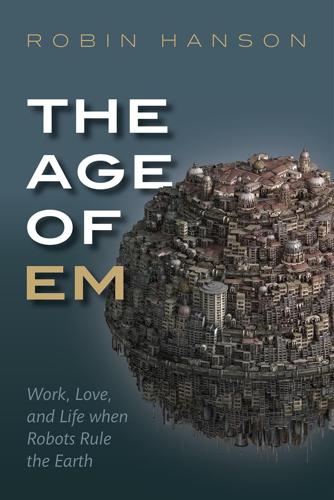
The Age of Em: Work, Love and Life When Robots Rule the Earth
by
Robin Hanson
Published 31 Mar 2016
In addition, any em can be tweaked in a limited number of ways. Artificial Intelligence Brain emulation is not the only possible way to make machines that can do almost all human jobs. For over a half-century, researchers in “artificial intelligence” (AI) have tried to directly and explicitly design and write software to accomplish many of the impressive functions performed by the human brain. This AI approach to creating intelligent machines is very different from the direct brain emulation approach that is the focus of this book. Brain emulation is more like porting software from one machine to another machine. To port software, one need only write software for the new machine that allows that machine to emulate the machine language of the old machine.
…
“Cracking the Code of Mass Customization.” MIT Sloan Management Review 50(3): 70–79. Sandberg, Anders. 2014. “Monte Carlo model of brain emulation development.” Working Paper 2014–1 (version 1.2), Future of Humanity Institute. http://www.aleph.se/papers/Monte%20Carlo%20model%20of%20brain%20emulation%20development.pdf. Sandberg, Anders, and Nick Bostrom. 2008. “Whole Brain Emulation: A Roadmap.” Technical Report #2008–2003, Future of Humanity Institute, Oxford University. http://www.fhi.ox.ac.uk/__data/assets/pdf_file/0019/3853/brain-emulation-roadmap-report.pdf. Sandstrom, Gillian, and Elizabeth Dunn. 2014. “Social Interactions and Well-Being: The Surprising Power of Weak Ties.”
…
If so, I aim to show that you were told wrong. My method is simple. I will start with a particular very disruptive technology often foreseen in futurism and science fiction: brain emulations, in which brains are recorded, copied, and used to make artificial “robot” minds. I will then use standard theories from many physical, human, and social sciences to describe in detail what a world with that future technology would look like. I may be wrong about some consequences of brain emulations, and I may misapply some science. Even so, the view I offer will still show just how troublingly strange the future can be. So let us begin.
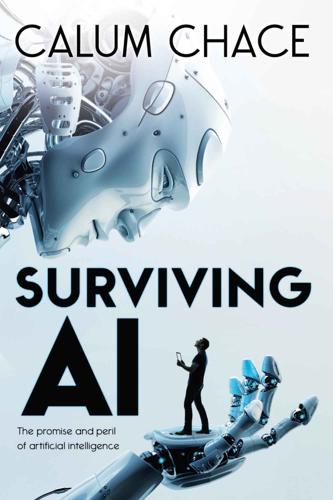
Surviving AI: The Promise and Peril of Artificial Intelligence
by
Calum Chace
Published 28 Jul 2015
However, it is not hard to imagine that if and when the prospect of conscious machines comes closer, the research may come under fire from particularly ardent worshippers. In the next three sections we will look at three ways to build a mind – an artificial system which can perform all the intellectual activities that an adult human can. They are: Whole brain emulation Building on artificial narrow intelligence A comprehensive theory of mind 4.2 – Whole brain emulation Whole brain emulation is the process of modelling (copying or replicating) the structures of a brain in very fine detail such that the model produces the same output as the original. So if a brain produces a mind, then the emulation (the model) produces a mind also.
…
If the replicated mind is approximately the same, but differs in some important respects it is called a simulation. Modelling a brain entails capturing the wiring diagram of the brain down a fine level of detail. The wiring diagram is called the connectome, by analogy with the genome, which is the map of an organism’s genetic material. Whole brain emulation is a mammoth undertaking. A human brain contains around 85 billion neurons (brain cells) and each neuron may have a thousand connections to other neurons. Imagine you could give every inhabitant of New York City a thousand pieces of string and tell them to hand the other end of each piece of string to a thousand other inhabitants, and have each piece of string send two hundred signals per second.
…
Imagine you could give every inhabitant of New York City a thousand pieces of string and tell them to hand the other end of each piece of string to a thousand other inhabitants, and have each piece of string send two hundred signals per second. Now multiply the city by a factor of ten thousand. That is a model of a human brain. It is often said to be the most complicated thing that we know of in the whole universe. To make the job of brain emulation more complex, individual neurons – the cells which brains are made up of – are not simple beasts. They consist of a cell body, an axon to transmit signals to other neurons, and a number of dendrites to receive signals. Axons and dendrites pass signals to each other across gaps called synapses.
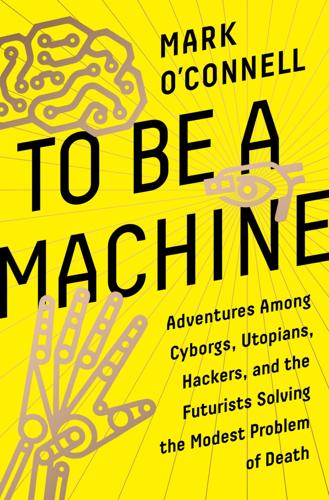
To Be a Machine: Adventures Among Cyborgs, Utopians, Hackers, and the Futurists Solving the Modest Problem of Death
by
Mark O'Connell
Published 28 Feb 2017
Randal had mentioned his name on several occasions during our discussions—both as someone broadly supportive of whole brain emulation and whose work was of significant relevance to that project—and Boyden had been a speaker at the Global Future 2045 event in New York the previous year. It was Boyden’s belief, he told me, that it would eventually be possible to build neuroprosthetic replacements for brain parts—which, if you take the Ship of Theseus view of things, is essentially the same as believing that whole brain emulation is possible. “Our goal is to solve the brain,” he said. He was referring here to the ultimate goal of neuroscience, which was to understand how the brain did what it did, how its billions of neurons, and the trillions of connections between them, organized themselves in such a way as to produce specific phenomena of consciousness.
…
Into a computable form?” “Yes,” said Boyden. “That’s the hope.” I felt that he was holding back from telling me he believed that whole brain emulations would at some point become a reality, but it was clear that he felt the principle to be sound, in a way that Nicolelis did not. And what he was telling me, ultimately, was that whether or not it led to it in the end, and whether or not it was his own ultimate goal, the kind of research that was necessary for the achievement of whole brain emulation was precisely the kind of research he himself was doing at MIT. This was all clearly a very long way from where Randal wanted to get to, a very long way from his mind, or mine, or yours, on a laptop screen, with its hundred billion firing neurons glimmering with the light of purified consciousness.
…
The conversation had turned to Ray Kurzweil, the inventor and entrepreneur and director of engineering at Google who had popularized the idea of the Technological Singularity, an eschatological prophecy about how the advent of AI will usher in a new human dispensation, a merger of people and machines, and a final eradication of death. Anders was saying that Kurzweil’s view of brain emulation, among other things, was too crude, that it totally ignored what he called the “subcortical mess of motivations.” “Emotions!” said the Frenchwoman, emotionally. “He doesn’t need emotions! That is why!” “That might be true,” said Alberto. “He wants to become a machine!” she said. “That is what he really wants to be!”

The Transhumanist Reader
by
Max More
and
Natasha Vita-More
Published 4 Mar 2013
He authored Citizen Cyborg: Why Democratic Societies Must Respond to the Redesigned Human of the Future (Basic Books, 2004); and “Embracing Change with All Four Arms: A Post-Humanist Defense of Genetic Engineering” (Eubios Journal of Asian and International Bioethics 6, 1996). Randal A. Koene, PhD, is Founder and CEO, Carboncopies.org. He authored “Fundamentals of Whole Brain Emulation: State, Transition and Update Representations” (International Journal on Machine Consciousness 4, 2012); and “Embracing Competitive Balance: The Case for Substrate-Independent Minds and Whole Brain Emulation” (The Singularity Hypothesis: A Scientific and Philosophical Assessment, Springer, 2012). Ray Kurzweil, PhD, is Founder, Kurzweil Technologies, Inc., Co-Founder and Chancellor, Singularity University.
…
And in terms of their activity those components are mostly quiet. I coined the term whole brain emulation around February/March of 2000 during a discussion on the old “mind uploading research group” (MURG) mailing list, in an effort to remove confusion stemming from the use of the term “mind uploading”, which better refers to a process of transfer of a mind from a biological brain to another substrate. It has since found a home in mainstream neuroscience, although the less specific term “brain emulation” is also frequently used when a project does not take on the scope of whole brains. The concept of emulation, as opposed to simulation (a term in common use where models in computational neuroscience are involved), refers to the running of an exact copy of the functions of mind on another processing platform.
…
Where astrophysics focuses on the physical or chemical properties of celestial bodies, cosmology focuses on the properties of our universe as a whole, in the one form in which it exists, of many possible forms allowed by physical properties. By now, you can probably tell that a whole brain emulation takes a very specific tack in its approach to achieving substrate-independent minds. We consider whole brain emulation the most conservative approach. If we understood a lot more about the way the mind works and how brain produces mind then we might have far more creative or effective ways to achieve a transfer (an “upload”) from a biological brain to another substrate.

The Singularity Is Nearer: When We Merge with AI
by
Ray Kurzweil
Published 25 Jun 2024
v=7cGRPvN5430; “Ameca Expressions with GPT3 / 4,” Engineered Arts, YouTube video, March 31, 2023, https://www.youtube.com/watch?v=yUszJyS3d7A. BACK TO NOTE REFERENCE 88 Anders Sandberg and Nick Bostrom, Whole Brain Emulation: A Roadmap, technical report 2008-3, Future of Humanity Institute, Oxford University (2008), 13, https://www.fhi.ox.ac.uk/brain-emulation-roadmap-report.pdf. BACK TO NOTE REFERENCE 89 Sandberg and Bostrom, Whole Brain Emulation, 80–81. BACK TO NOTE REFERENCE 90 For further resources related to mind uploading and brain emulation, see S. A. Graziano, “How Close Are We to Uploading Our Minds?,” TED-Ed, YouTube video, October 29, 2019, https://www.youtube.com/watch?
…
At the stage of directly copying over the contents of living brains to nonbiological mediums, we transition from the merely simulated replicants I describe to actual mind uploading, also known as whole-brain emulation, or WBE. Simulating a mind on a nonbiological medium can mean vastly different things in computational terms. In 2008, John Fiala, Anders Sandberg, and Nick Bostrom identified eleven different levels of possible brain emulation.[89] But to simplify here, brain emulations fall into roughly five categories, proceeding from most abstract to most exhaustive: functional, connectomic, cellular, biomolecular, and quantum. Functional emulations are those that would act like a biologically based mind but need not actually replicate any of the specific computational structure of a given person’s brain.
…
See the appendix for the sources used for all the cost-of-computation calculations in this book. BACK TO NOTE REFERENCE 149 Anders Sandberg and Nick Bostrom, Whole Brain Emulation: A Roadmap, technical report 2008-3, Future of Humanity Institute, Oxford University (2008), 80–81, https://www.fhi.ox.ac.uk/brain-emulation-roadmap-report.pdf. BACK TO NOTE REFERENCE 150 Sandberg and Bostrom, Whole Brain Emulation. BACK TO NOTE REFERENCE 151 Mitch Kapor and Ray Kurzweil, “A Wager on the Turing Test: The Rules,” KurzweilAI.net, April 9, 2002, http://www.kurzweilai.net/a-wager-on-the-turing-test-the-rules [inactive].

Singularity Rising: Surviving and Thriving in a Smarter, Richer, and More Dangerous World
by
James D. Miller
Published 14 Jun 2012
Kurzweil foresees mankind colonizing the universe at almost the maximum speed allowed by the laws of physics.59 I’m uncertain whether bioengineers will ever be able to figure out how to make extremely smart people by integrating computers into our brains. But the possibility that this could happen is a path to the Singularity that mankind has a reasonable chance of following. 2.Whole Brain Emulation An argument against using the brain as the basis for AI is that our brains are so complex it might take centuries for us to understand them well enough to merge them with machines. But even if we don’t completely understand how the brain works, we still might be able to create machine emulations of it. Brain emulation would essentially be an “upload” of a human brain into a computer. Assuming sufficiently high fidelity in both simulation and brain scanning, the emulation would think just as the original, biological human did.
…
Consequently, there’s an excellent chance that the software “essences” of our brains are robust enough that they could survive being ported to a machine. Of course, porting might introduce alterations that evolution never had a chance to protect us against, so the changes might make our brains nonfunctional. But whole brain emulation is still a path to the Singularity that could work, even if a Kurzweilian merger proves beyond the capacity of bioengineers. If we had whole brain emulations, Moore’s Law would eventually give us some kind of Singularity. Imagine we just simulated the brain of John von Neumann. If the (software adjusted) speed of computers doubled every year, then in twenty years we could run this software on computers that were a million times faster and in forty years on computers that were a trillion times faster.
…
Doing this wouldn’t require me to understand why a game had blue dots. Once my computer had the emulator, it could run any Atari game without my having to understand how the software worked. An emulator for the human brain, similarly, could allow the uploading of a brain by someone ignorant of most of the brain’s biochemistry. The success of whole brain emulations would, in large part, come down to how well our brains can handle small changes because the emulations would never be perfect. Human brains, however, are extremely robust to environmental stress. You could hit someone, infect his brain with parasites, raise or lower the temperature of his environment, and feed him lots of strange information, and he’d probably still be able to think pretty much the way he did before.68 Evolution designed our brains to not go crazy when they encounter an unfamiliar environment.
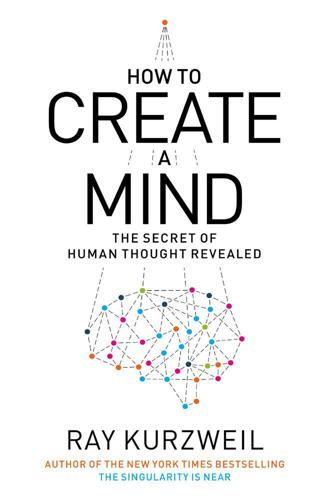
How to Create a Mind: The Secret of Human Thought Revealed
by
Ray Kurzweil
Published 13 Nov 2012
The report projects ongoing exponential gains in all of these areas of capability and argues that the requirements to simulate the human brain at a high level of detail are coming into place. An outline of the technological capabilities needed for whole brain emulation, in Whole Brain Emulation: A Roadmap by Anders Sandberg and Nick Bostrom. An outline of Whole Brain Emulation: A Roadmap by Anders Sandberg and Nick Bostrom. Neural Nets In 1964, at the age of sixteen, I wrote to Frank Rosenblatt (1928–1971), a professor at Cornell University, inquiring about a machine called the Mark 1 Perceptron. He had created it four years earlier, and it was described as having brainlike properties.
…
Wedeen and his colleagues at Massachusetts General Hospital showing a highly regular gridlike structure of the wiring of the neocortex that I described in chapter 4 is one early result from this project. Oxford University computational neuroscientist Anders Sandberg (born in 1972) and Swedish philosopher Nick Bostrom (born in 1973) have written the comprehensive Whole Brain Emulation: A Roadmap, which details the requirements for simulating the human brain (and other types of brains) at different levels of specificity from high-level functional models to simulating molecules.8 The report does not provide a timeline, but it does describe the requirements to simulate different types of brains at varying levels of precision in terms of brain scanning, modeling, storage, and computation.
…
Jonah Lehrer, “Can a Thinking, Remembering, Decision-Making Biologically Accurate Brain Be Built from a Supercomputer?” Seed, http://seedmagazine.com/content/article/out_of_the_blue/. 6. Fildes, “Artificial Brain ‘10 Years Away.’” 7. See http://www.humanconnectomeproject.org/. 8. Anders Sandberg and Nick Bostrom, Whole Brain Emulation: A Roadmap, Technical Report #2008–3 (2008), Future of Humanity Institute, Oxford University, www.fhi.ox.ac.uk/reports/2008‐3.pdf. 9. Here is the basic schema for a neural net algorithm. Many variations are possible, and the designer of the system needs to provide certain critical parameters and methods, detailed on the following pages.
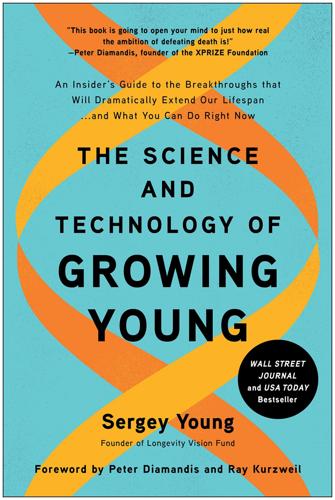
The Science and Technology of Growing Young: An Insider's Guide to the Breakthroughs That Will Dramatically Extend Our Lifespan . . . And What You Can Do Right Now
by
Sergey Young
Published 23 Aug 2021
Steve Horvath, who developed the first epigenetic clock—a method of measuring age biologically, rather than merely by your birthdate. I have also sat with visionary futurists like Susumu Tachi, PhD, who invented the concept of human avatars, which he calls telexistence, a highly realistic form of remote virtual reality; Anders Sandberg, PhD, one of the few true experts on whole brain emulation and technical immortality; as well as extraordinary polymaths, such as organ regeneration and pharmaceutical entrepreneur Martine Rothblatt, PhD; prolific inventor Dr. Robert Langer, a cofounder of Moderna, which you may recognize as the company that developed one of the first COVID-19 vaccines, also known as the Edison of Medicine; and Jamie Metzl, public policy expert and the author of Hacking Darwin: Genetic Engineering and the Future of Humanity.
…
Take that yet one step further—what if the artificial intelligence controlling the avatar was actually you? What if your consciousness could be digitized and stored in the cloud, ready to be accessed by any computing device or avatar that you wished, whether your original physical body continued to exist or not? That is the premise of “whole brain emulation,” a project spearheaded by Anders Sandberg, a Swedish neuroscientist, futurist, and researcher at the Oxford Future of Humanity Institute. Anders and others believe that it may be possible to digitally simulate all the neurons of the brain and the electrochemical signals that are exchanged between them.
…
If it is possible to identify exactly the pattern of impulses that takes place with every thought, every action, every emotion, then this can be fully replicated by a computer program. With the help of quantum computing and AGI, it could become so accurate that the emulated you would be indistinguishable from the original you. Using advanced scanning technology, microscopes, and mathematics, Anders believes this is entirely possible. These whole-brain emulations could be deployed anywhere—even in multiple places simultaneously. Want to understand quantum physics? Summon up Richard Feynman or Albert Einstein for a chat. Need a visionary business genius to help your company through its next transformation? Download Steve Jobs or Tony Robbins. Throwing a big bash for your 150th birthday party?
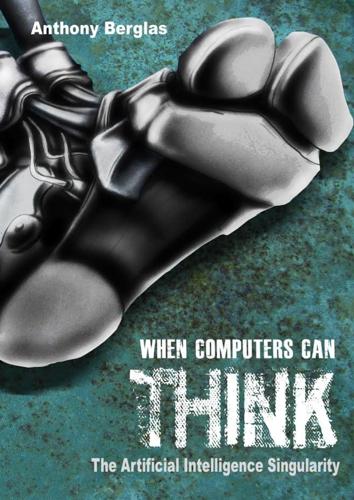
When Computers Can Think: The Artificial Intelligence Singularity
by
Anthony Berglas
,
William Black
,
Samantha Thalind
,
Max Scratchmann
and
Michelle Estes
Published 28 Feb 2015
To be fair, Yudkowsky has never said that building a friendly AGI would be easy, nor has he said that he knows how to do it. He merely states that if it is not done then humanity will be at grave risk from the AGIs that will almost certainly be built in the not-too-distant future. That is a premise with which this author is in full agreement. Whole brain emulation An alternative approach to producing an AGI is to focus on whole brain emulation because such an intelligence would be fundamentally human, and so would share our values. Doing this would only require an understanding of the physics of brains, not how cognition actually arises. This means that the AGI would have limited ability to recursively self-improve, so there would be more opportunity to understand and control it.
…
Freeze it 4. Show AGIs the light 5. Virtuous machines 6. Ethics 7. Infanticide 8. Three laws of robotics 9. Friendly AGI 10. Friendly AGI research 11. Fast take off 12. Single AGI 13. Goal consistency 14. Unpredictable algorithms 15. Ethics 16. Defeating natural selection 17. Wishful thinking 18. Whole brain emulation 19. Chain of AGIs 20. Running away 21. Just do not build an AGI 8. Political Will 1. Atom bombs 2. Iran's atomic ambitions 3. Stuxnet 4. Glass houses 5. Zero day exploits 6. Practicalities of abstinence 7. Restrict computer hardware 8. Asilomar conference 9. Patent trolls 10. Does it really matter?
…
It critiques the impressive early results in AI research, and then reviews various approaches to modelling the world formally using logic, and the difficulty of reasoning with uncertain knowledge. Building robots that can function in the real world introduces additional problems of vision and movement. Both artificial and biological neural networks are also described in some detail together with the practical difficulties involved with brain emulation. This part provides sufficient technical details to understand how the technologies actually work, but without using heavy mathematics. It should help raise the level of discussion about artificial intelligence. What will computers think about? Public, NASA supercomputer. The third part of the book considers what the true nature of an intelligent machine might be.
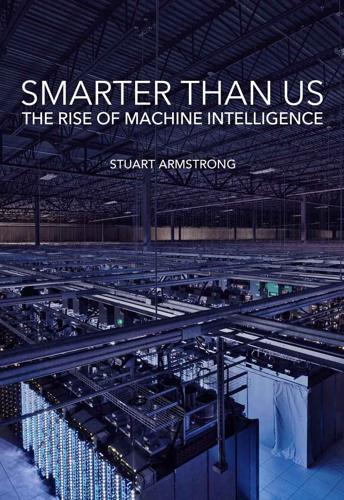
Smarter Than Us: The Rise of Machine Intelligence
by
Stuart Armstrong
Published 1 Feb 2014
David John Chalmers, “The Singularity: A Philosophical Analysis,” Journal of Consciousness Studies 17, nos. 9–10 (2010): 7–65, http://www.ingentaconnect.com/content/imp/jcs/2010/00000017/f0020009/art00001. 5. Robin Hanson, “Economics of the Singularity,” IEEE Spectrum 45, no. 6 (2008): 45–50, doi:10.1109/MSPEC.2008.4531461; Robin Hanson, “The Economics of Brain Emulations,” in Unnatural Selection: The Challenges of Engineering Tomorrow’s People, ed. Peter Healey and Steve Rayner, Science in Society (Sterling, VA: Earthscan, 2009). 6. James Barrat, Our Final Invention: Artificial Intelligence and the End of the Human Era (New York: Thomas Dunne Books, 2013). 7. $750 million to develop the Mach3 alone (and another $300 million to market it).
…
“Nine Ways to Bias Open-Source AGI Toward Friendliness.” Journal of Evolution and Technology 22, no. 1 (2012): 116–131. http://jetpress.org/v22/goertzel-pitt.htm. Hanson, Robin. “Economics of the Singularity.” IEEE Spectrum 45, no. 6 (2008): 45–50. doi:10.1109/MSPEC.2008.4531461. ———. “The Economics of Brain Emulations.” In Unnatrual Selection: The Challenges of Engineering Tomorrow’s People, edited by Peter Healey and Steve Rayner. Science in Society. Sterling, VA: Earthscan, 2009. Hibbard, Bill. “Super-Intelligent Machines.” ACM SIGGRAPH Computer Graphics 35, no. 1 (2001): 13–15. http://www.siggraph.org/publications/newsletter/issues/v35/v35n1.pdf.

Robot Rules: Regulating Artificial Intelligence
by
Jacob Turner
Published 29 Oct 2018
Neural networks and machine learning are techniques which fall within this book’s definition of AI, but they are not the only technologies capable of doing so. This book’s definition of AI is intended to cover neural networks but also to be sufficiently flexible to encompass also other technologies which may become more prevalent in the future—one example being whole brain emulation (the science of attempting to map and then reproduce the entire structure of an animal brain). This functional definition may be under-inclusive from the perspective of those seeking a universal measure of intelligence. Unlike most other definitions, it does not attempt to encompass all the technologies which have traditionally been described as “intelligent”.
…
The precise boundaries between what is “human” and what is “artificial” for the purposes of ascribing rights are a matter beyond the scope of this chapter. The main point is that the distinction between human and technology may become increasingly fluid.122 A further biology-based route to AI through whole brain emulation does not aim to augment or update human brains, but rather to create an entirely new brain capable of intelligent thoughts, feelings and consciousness , using a combination of technology and bioengineering.123 As noted above, owing to her status as the first cloned mammal, throughout her life Dolly the sheep was monitored and cared for by teams of scientists and veterinarians, receiving state of the art care.124 In the same way that we treated this quasi-artificial sheep with equal or greater respect to a natural sheep, would we not do the same for an artificial human brain?
…
It has never been suggested that an attempt to regain lost brain functions by using artificial parts would entail a greater cost to his legal recognition”. 121“The World’s Most Famous Real-Life Cyborgs”, The Medical Futurist, http://medicalfuturist.com/the-worlds-most-famous-real-life-cyborgs/, accessed 1 June 2018. 122For further argument as to why technological advances should not lead to a reduction in rights, see also Nick Bostrom, “In Defence of Posthuman Dignity”, Journal of Value Inquiry, Vol. 37, No. 4 (2005), 493–506: “From the Transhumanist standpoint, there is no need to behave as if there were a deep moral difference between technological and other means of enhancing human lives. By defending posthuman dignity we promote a more inclusive and humane ethics, one that will embrace future technologically modified people as well as humans of the contemporary kind”. 123Anders Sandberg and Nicholas Bostrom, “Whole Brain Emulation: A Roadmap”, Technical Report #2008–3, Future of Humanity Institute, Oxford University, www.fhi.ox.ac.uk/reports/2008‐3.pdf, accessed 1 June 2018. 124“Dolly the Sheep”, Website of National Museums Scotland, https://www.nms.ac.uk/explore-our-collections/stories/natural-world/dolly-the-sheep/, accessed 1 June 2018. 125See, for instance, John Harris, “‘Goodbye Dolly?’

Deep Utopia: Life and Meaning in a Solved World
by
Nick Bostrom
Published 26 Mar 2024
The Condition and Treatment of the Children Employed in the Mines and Collieries of the United Kingdom. London: William Strange. Sahlins, M. 1972. Stone Age Economics. Chicago: Aldine-Atherton. Sandberg, A. & Bostrom, N. 2008. “Whole Brain Emulation: A Roadmap”. Technical Report #2008‐3, Future of Humanity Institute, Oxford University. http://www.fhi.ox.ac.uk/brain-emulation-roadmap-report.pdf Sandel, M. 2007. The Case Against Perfection. Cambridge: Harvard University Press. Schopenhauer, A. [1851] 1901. “The Wisdom of Life”. In T. B. Saunders (Trans.), Essays of Arthur Schopenhauer. New York: A. L.
…
So it is useful to put it in context. We may, for example, compare this number with our earlier [in Superintelligence] estimate that it may take about 1031–1044 ops to simulate all neuronal operations that have occurred in the history of life on Earth. Alternatively, let us suppose that the computers are used to run human whole brain emulations that live rich and happy lives while interacting with one another in virtual environments. A typical estimate of the computational requirements for running one emulation is 1018 ops/s. To run an emulation for 100 subjective years would then require some 1027 ops. This would mean that at least 1058 human lives could be created in emulation even with quite conservative assumptions about the efficiency of computronium.
…
Yet we may want the AI to steer clear of certain types of simulation because they would involve the generation of morally relevant mental entities, such as minds with preferences or conscious experiences. So the AI would have to devise the plan for exactly how to modify the subject’s brain without resorting to proscribed types of computations. It is unclear how much difficulty this requirement adds to the task. Downloading mental content would be easier if the receiving mind was a brain emulation (aka an “upload”), implemented as software rather than biologically. In this case, the readout from the original brain would have been done in advance, potentially under easier conditions, such as by means of a destructive scan of a vitrified brain rather than in vivo. Subsequent read and write operations would be trivial—they would simply involve editing a digital file, and the mind could be paused while the procedure is taking place.
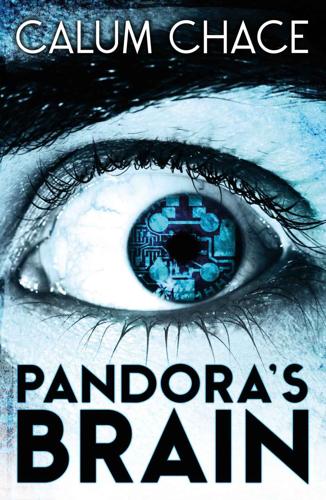
Pandora's Brain
by
Calum Chace
Published 4 Feb 2014
His un-combed mousy-brown hair and lived-in white shirt and linen jacket, faded chinos and brown hiking shoes suggested that he cared far more about ideas than about appearances. After a brilliant academic career at Imperial College London, where he was a professor of neuroscience, he had surprised his peers by moving to India to establish a brain emulation project for the Indian government. He ran the project for ten years, before retiring to research and write about the ethics of transhumanism and brain emulation. He was extremely intelligent, and highly focused and logical, but he sometimes failed to acknowledge contrary lines of thought. As a result, some of his thinking appeared not only outlandish to his peers, but worse, naive.
…
People started to refer to Matt’s upload and subsequent disappearance as the ‘Sputnik moment’ for artificial intelligence: the day the balloon went up, the day people and governments began to take the prospect of machine intelligence seriously. Very seriously. Laws were passed in all major countries forbidding the initiation of a brain emulation or simulation, and international treaties were signed to underpin and help enforce these laws. Funding was withdrawn from several major research programmes around the world which were developing brain models for medical diagnostic purposes rather than mind emulation. Some of this funding was diverted to programmes designed to work out how a brain emulation could be guaranteed to be human-friendly, but it was obvious that the problem was immense. How do you pre-determine the goals and actions of a mind which is much smarter than its controllers, and getting even smarter all the time?
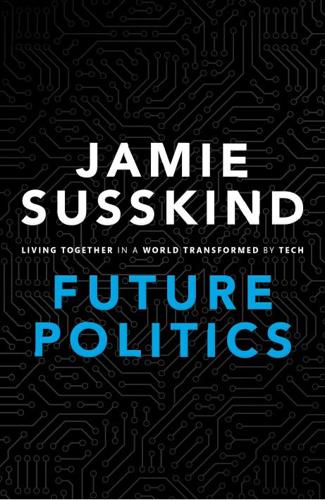
Future Politics: Living Together in a World Transformed by Tech
by
Jamie Susskind
Published 3 Sep 2018
There is a spectrum of approach, for instance, between those who seek to recreate the neural engineering of the human brain, just as ‘early designs for flying machines included flapping wings’, and those who employ entirely new techniques tailored for artificial computation.24 Some researchers seek the holy grail of an artificial general intelligence like the human mind, endowed with consciousness, creativity, common sense, and the ability to ‘think’ abstractly across different environments. One way to achieve this goal might be whole-brain emulation, currently being pursued in the Blue Brain project in Switzerland. This involves trying to map, simulate, and replicate the activity of the (more than) 80 billion neurons and tens of trillions of synapses in the human brain, together with the workings of the central nervous system.25 Whole-brain emulation remains a remote prospect but is not thought to be technically impossible.26 As Murray Shanahan argues, our own brains are proof that it’s physically possible to assemble ‘billions of ultra-low-power, nano-scale components into a device capable of human-level intelligence’.27 Most contemporary AI research, however, is not concerned with artificial general intelligence or whole-brain emulation.
…
This involves trying to map, simulate, and replicate the activity of the (more than) 80 billion neurons and tens of trillions of synapses in the human brain, together with the workings of the central nervous system.25 Whole-brain emulation remains a remote prospect but is not thought to be technically impossible.26 As Murray Shanahan argues, our own brains are proof that it’s physically possible to assemble ‘billions of ultra-low-power, nano-scale components into a device capable of human-level intelligence’.27 Most contemporary AI research, however, is not concerned with artificial general intelligence or whole-brain emulation. Rather, it is geared toward creating machines capable of performing specific, often quite narrow, tasks with an extraordinary degree of efficacy. AlphaGo, Deep Blue, and Watson did not possess ‘minds’ like those of a human being. Deep Blue, whose only function was to play chess, used ‘brute number-crunching force’ to process hundreds of millions of positions each second, generating every possible move for up to twenty or so moves.28 OUP CORRECTED PROOF – FINAL, 26/05/18, SPi РЕЛИЗ ПОДГОТОВИЛА ГРУППА "What's News" VK.COM/WSNWS 34 FUTURE POLITICS It’s tempting to get hung up on the distinction between machines that have a narrow field of cognitive capacity and those able to ‘think’ or solve problems more generally.
…
E. 398 Schechner, Sam 419 Schmidt, Eric 374, 376, 384, 385, 398, 435 Schneider, Nathan 430 Schneier, Bruce 388 Scholz, Trebor 430 Schrems, Max 64–5 Schultz, Jason 325, 394, 418, 429, 431 Schumpeter, Joseph 218, 219, 221, 242, 409 Schwab, Klaus 319, 379, 381, 382, 417, 428 Scoble, Robert 381, 404, 405 Scott, Clare 385 Scott, James C. 127–8, 130–1, 133–4, 395 scrutable nature of society 127–34, 337 scrutiny 89, 122–41 auxiliary function 124, 125 cryptography 182 digital liberation 170 in digital lifeworld 127–40 disciplinary function 124, 125–7 implications 141 nature of 123–4 power of 124–7 public and private power 154, 155, 156–7, 160 separation of powers 358–9 of staff 267 search engines perception-control 147–8, 150, 151, 152 totalitarianism 177 see also Google Sedol, Lee 31 self-driving vehicles 30 communication between 48 ‘cyber’ and ‘real’ distinction, disappearance of 97 democracy 359 digital liberation 169 embedded rules 73–4 force, digitization of 103–4 harm principle 198, 204 liberty and private power 192 lidar 49 machine learning 35 privatization of force 116, 117–18 robotics 54–5 technological unemployment 299 totalitarianism 178 utility analogy 158 OUP CORRECTED PROOF – FINAL, 28/05/18, SPi РЕЛИЗ ПОДГОТОВИЛА ГРУППА "What's News" VK.COM/WSNWS Index self-enforcing law 101–3 Semayne’s Case 396 Sen, Amartya 408 Sensifall 407 sensitivity of technology 49–53 separation of powers 358 sexism 273 neutrality fallacy 291 rule-based injustice 283, 285 sexuality Apple’s homosexuality ‘cure’ apps 235–6 Hart–Devlin debate 202 justice in recognition 272–3 neutrality fallacy 289 political agenda 72 Shakespeare, William 308, 310, 331, 426 Shanahan, Murray 373, 374, 375, 376, 379, 436 whole-brain emulation 33 shared values principle 353–4, 355, 357 sharing economy 335–6 Shead, Sam 424 Shel, Israel 381, 404, 405 Shiller, Benjamin Reed 419–20 Shin, Laura 379 shopping platforms, and distributive justice 269 Siedentop, Larry 389, 418, 429 Siegel, Eric 397, 398, 419 Silicon Valley automation of morality 177 brain–computer interfaces 48 employee characteristics 8, 294 employee numbers 319 ‘Google Doctrine’ 15 Moore’s Law 39, 41 philosophical engineers 8 startups, claims of 6–7 Silva, Shiroma 413 Silver, David 372, 374 Silverman, Craig 412 Simon, Julie 410, 414, 416 Simonite, Tom 375, 386, 404 Singer-Vine, Jeremy 419 Singh Grewal, David 428 511 Skinner, Quentin 167, 401 Skunk Riot Control Copter 179 Skype 148 Slee, Tom 290–1, 422, 423 Sloan Digital Sky Survey 65 smart assets 47 smart cities 44, 50, 66 fairness principle 353 scrutiny 130 smart contracts 47, 106–7 automation of force 119 smart devices 43 automation of force 119 code’s empire 97 connectivity 45, 48 dolls 182 glasses 58 guns 106 hacking 182, 183 harm principle 197–8 pervasiveness 43–4 pills 51 privatization of force 116 productive technologies 316 scrutiny 134, 135–6 toilet paper dispensers 51 toilets 182 vibrators 135–6 smart dust technology 50 smartphones Android 318 checking 42 Direct Democracy 240 Freedom app 166 GPS 64 implantable 52 interfaces 51 location prediction 139 NeuroSky headsets 48 perception-control 146 Pokémon Go 58 processing power 38 scrutiny 135 sensors 50–1 smart stores 299 Smith, Adam 264, 301, 325, 326, 429 Smith, Bryant Walker 383 OUP CORRECTED PROOF – FINAL, 28/05/18, SPi РЕЛИЗ ПОДГОТОВИЛА ГРУППА "What's News" VK.COM/WSNWS 512 Index Smith, Cooper 387 Smith, Mat 377 Snapchat 44, 58 Snowden, Edward 156 social justice 3, 10, 24–5, 346 algorithmic injustice 279–94 in distribution 257–70, 274, 278 future 340–1 nature of 258–9 property 313–41 in recognition 271–8 sharing economy 336 technological unemployment 295–312 Socrates 136, 217, 226 Solon, Olivia 419 Solove, Daniel J. 194, 406 Soltani, Ashkan 419 sousveillance 63 South Africa 179 Spain 50, 58 Special Air Service (SAS) 287–8 speech freedom of 190–1, 235–7 recognition 30 Spence, Michael 425, 427, 431 Spencer, Herbert 308, 426 spinach, bomb-detecting 51 Spinoza, Baruch 224, 411 spintronic materials 41 Spotify 236 Sprat, Thomas 79 Squires, Judith 72, 389, 420 Srnicek, Nick 426 stability, and democracy 225, 234 standards digital law 107–8, 109–10, 113 network effect 320, 321 Staples 269 state and distributive justice 264, 265 ownership of capital 329–30 supercharged see supercharged state Statista 378 statistics 17–18 status, and work paradigm 301, 307–9 Steele, Billy 396 Steiner, Christopher 391, 421 Stephen, James Fitzjames 201–2, 407 Stoics 323 Straitens, Iman 416 structural regulation 356–9 Sudha, L.
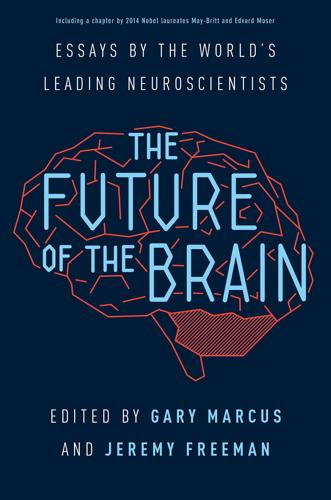
The Future of the Brain: Essays by the World's Leading Neuroscientists
by
Gary Marcus
and
Jeremy Freeman
Published 1 Nov 2014
Ethically, as full-scale human brain emulations have neared, the political battles have been heated. Some see modeled rodents as ethically equal to real rodents and argue that complete human-brain emulations merit rights equal to human beings. Some scholars see emotional distress in the rudimentary human brain simulants. Yet most (chose to) believe that a simulation is an imitation rather than the real thing, just like a computer simulating the aerodynamics of flight will never actually lift off. Politicians avoid the issue, but time is clearly running out. Will it be legal to employ a whole-brain emulation for intellectual work, much as one might employ a human?

Radicals Chasing Utopia: Inside the Rogue Movements Trying to Change the World
by
Jamie Bartlett
Published 12 Jun 2017
, BBC, 2013, http://www.bbc.co.uk/science/0/23695785; Michael Hendricks, ‘The false science of cryonics’, MIT Technology Review, 2015, https://www.technologyreview.com/s/541311/the-false-science-of-cryonics/. 20. Anders Sandberg and Nick Bostrom, ‘Whole brain emulation: A road map’, Technical Report #2008-3, Future of Humanity Institute, Oxford University, 2008, http://www.fhi.ox.ac.uk/brain-emulation-roadmap-report.pdf. 21. In 2013, a research group from MIT prompted the Obama administration to launch the Brain Research through Advancing Innovative Neurotechnologies (BRAIN) Initiative, which sponsors researchers to map the brain’s neurons.
…
The effects of freezing the body, and especially the brain, are wildly uncertain and even the Cryonic Institute concedes that it is ‘unknown’ whether future societies will be able to revive cryonic subjects successfully.19 But they received a boost in 2015 when one test showed that the roundworm Caenorhabditis elegans retains its memories after being cryopreserved at liquid-nitrogen temperatures. The final, and most speculative, of all the transhumanist technologies is called ‘mind uploading’. Each person’s brain has a unique set of neurons and neural pathways, shaped by all the things that person has seen, heard, felt and done. Whole-brain emulation involves creating a faithful ‘map’ of the brain using advanced scanning techniques. Advocates hope that an identical copy of a person’s brain would be indistinguishable from the original, and so would replicate that person’s mind, which could be stored on a (presumably very large) memory stick.

Human Frontiers: The Future of Big Ideas in an Age of Small Thinking
by
Michael Bhaskar
Published 2 Nov 2021
Our consciousness and thought patterns are, so far as we can tell, contingent on the evolutionary processes behind them. This must then be true (to some extent) of our ideas. Brain–machine links would be a leap above anything we have experienced before. Fusions of the biological and the technological could also recreate the human mind in silico – whole brain emulations or ‘ems’ that reproduce a human brain neuron by neuron, all 86 billion of them complete with all 100 trillion synaptic connections – or at least achieve the same effect, hence theoretically recreating individuals as new machine-based entities. Your brain, but not your brain. Such ems would be as remote from us as we are from our distant ancestors on the savannah: working on a hugely accelerated timescale (a single year may feel like millennia or more), anchored in virtual realities clustered in dense physical architectures of servers and coolants, where clans of ems reproduce themselves at will, working at jobs barely conceivable in the fleshy present.53 These minds could run millions of times slower or faster than ours.
…
Yet more significant are the first fully functioning Von Neumann probes: self-replicating robots thrown out into the galaxy to endlessly reproduce themselves, ultimately to form a numberless swarm strung out across space. A full Type II civilisation is eventually realised with the construction of a Dyson sphere around the Sun, collecting all its energy. Closer to home, whole-brain emulation is a reality, ushering in a new em civilisation in parallel. Everything changes again when artificial general intelligence finally becomes a reality and the intelligence explosion kicks in. Type III Ideas (long-term) At this distance, ideas grow hazy – like gazing at a distant star, their light fades in and out, blurry and indistinct.
…
utm_source=twitterShare White, Curtis (2003), The Middle Mind: Why Americans Don't Think for Themselves, San Francisco: HarperSanFrancisco White, Curtis (2014), The Science Delusion: Asking the Big Questions in a Culture of Easy Answers, New York: Melville House Whitehead, A.N. (1925), Science and the Modern World, London: Macmillan Williams, Jeffrey J. (2018), ‘The Rise of the Promotional Intellectual’, The Chronicle of Higher Education, accessed 22 August 2018, available at https://www.chronicle.com/article/the-rise-of-the-promotional-intellectual/ Wilson, Edward O. (2017), The Origins of Creativity, London: Allen Lane Winchester, Simon (2008), The Man Who Loved China: The Fantastic Story of the Eccentric Scientist Who Unlocked the Mysteries of the Middle Kingdom, New York: HarperCollins Wolf, Martin (2019), ‘On the Technological Slowdown’, Foreign Affairs, accessed 14 July 2019, available at https://www.foreignaffairs.com/articles/2015-11-19/martin-wolf-innovation-slowdown Wong, May (2017), ‘Scholars say big ideas are getting harder to find’, Phys.org, accessed 10 October 2018, available at https://phys.org/news/2017-09-scholars-big-ideas-harder.html Wootton, David (2015), The Invention of Science: A New History of the Scientific Revolution, London: Allen Lane Wright, Robert (2000), Nonzero: History, Evolution and Human Cooperation, New York: Pantheon Books Wright, Ronald (2006), A Short History of Progress, Edinburgh: Canongate Wu, L., Wang, D., and Evans, J.A. (2019), ‘Large teams develop and small teams disrupt science and technology’, Nature 566, pp. 378–82 Wuchty, Stefan, Jones, Benjamin F., and Uzzi, Brian (2007), ‘The Increasing Dominance of Teams in Production of Knowledge’, Science, Vol. 316 No. 5827, pp. 1036–9 Xinhua (2019), ‘China to build scientific research station on Moon's south pole’, Xinhua, accessed 18 January 2021, available at http://www.xinhuanet.com/english/2019-04/24/c_138004666.htm Yueh, Linda (2018), The Great Economists: How Their Ideas Can Help Us Today, London: Penguin Viking Index ‘0,10’ exhibition 103 ‘0-I’ ideas 31 Aadhaar 265 abstraction 103 AC motor 287, 288 academia 209 Académie des sciences 47 Adam (robot) 235–6 Adams, John 211 Adler, Alfred 188 Adobe 265 Advanced Research Projects Agency (ARPA) 180, 247, 253, 296, 317 AEG 34 aeroplanes 62–6, 68–70, 71, 219 Aeschylus 3 Africa 267, 279–80, 295 age/ageing 122, 158–60, 193 AGI see artificial general intelligence Agrarian Revolution 252 agricultural production 92–3 AI see artificial intelligence Akcigit, Ufuk 193 Alexander the Great 159 Alexander, Albert 52 Alexandrian Library 4, 295, 304 algorithms 175, 185, 196, 224, 235, 245 aliens 240–1, 306, 308–9, 337 Allison, Jim 58 Alphabet 193, 225, 265, 294, 295 AlphaFold software 225–6, 227, 228–9, 233 AlphaGo software 226–7, 228, 233 AlQuraishi, Mohammed 225, 226, 229 Amazon 84–5, 214, 272 Amazon Prime Air 71 American Revolution 139 amino acids 223, 226 Ampère, André-Marie 74–5 Anaximander 35 ancestors 10–12 ancient Greeks 1–6, 7–8, 291, 303–4 Anderson, Kurt 106 Angkor Wat 43 anthrax 47–8, 51 Anthropocene 14–15 anti-reason 211–12 anti-science 211–12 antibacterials 234 antibiotics 38, 52–3, 124, 125, 217, 315 resistance to 235 Apollo missions 70, 315, 316, 317, 318 Apple 33, 85, 159, 185, 186, 193, 272, 296, 312 Aquinas, Thomas 36 AR see augmented reality archaeology 153–4 Archimedes 1–6, 7–8, 19, 27, 32, 37, 39, 291, 304 architecture 103, 115, 188 ARIA 297 Aristarchus 5 Aristotle 24, 108, 282, 304 Arkwright, Richard 25, 26, 34, 253 Armstrong, Louis 103 ARPA see Advanced Research Projects Agency art 99–104, 107–8, 176–7, 236, 321, 339 Artemis (Moon mission) 71, 218 artificial general intelligence (AGI) 226, 237–8, 249, 250, 310, 313, 330, 341 artificial intelligence (AI) 225–9, 233–41, 246–7, 248, 249–52, 262, 266, 300, 310, 312–13, 323, 329, 330, 331, 338 arts 152, 293 see also specific arts Artsimovich, Lev 147 arXiv 116 Asia 264, 267–8, 273, 275 Asimov, Isaac, Foundation 45 Astor, John Jacob 288 astronomy 30, 231, 232 AT&T 85, 181, 183, 185, 197 Ates, Sina T. 193 Athens 24, 295 Atlantis 154 augmented reality (AR) 241–2, 338 authoritarianism 112–13, 284 autonomous vehicles 71, 72, 219 ‘Axial Age’ 108 Azoulay, Pierre 317–18 Bach, J.S. 236 bacillus 46 Bacon, Francis 25, 259 bacteria 38, 46, 53 Bahcall, Safi 31 Ballets Russes 99–100 Baltimore and Ohio railway 67 Banks, Iain M. 310 Bardeen, John 182 BASF 289 Batchelor, Charles 286 Bates, Paul 226 Bayes, Thomas 289 Beagle (ship) 36 Beethoven, Ludwig van 26 Beijing Genomics Institute 257, 294–5 Bell Labs 180–4, 186–8, 190, 206, 214, 217, 289, 296, 322 Benz, Karl 68, 219, 330 Bergson, Henri 109 Bessemer process 80 Bezos, Jeff 71, 326 Bhattacharya, Jay 201, 202, 321 Biden, Joe 59 Big Bang 117, 174, 181 Big Big Ideas 79–80 big ideas 5, 8, 11, 13–19 adoption 28 and an uncertain future 302–36 and art 99–103 artificial 223–38 and the Big Ideas Famine 13 and bisociation 36 blockers to 17–18 and breakthrough problems 46–73, 77, 86, 98, 222, 250, 301 and the ‘burden of knowledge’ effect 154–65, 175, 178, 235, 338 and business formation 95 ceiling 18 conception 37 definition 27–8, 40–1 Enlightenment 132–40, 136–40 era of 109–10 erroneous 176 evidence for 222, 223–54 execution 37 ‘fishing out’ mechanism 152 future of 45, 98, 302–36, 337–43 harmful nature 41–2 how they work 23–45 and the Idea Paradox 178–9, 187, 191, 217, 226, 250, 254, 283–4, 301, 312, 342 and the Kardashev Scale 337–43 long and winding course of 4, 5, 35–8, 136 and the low-hanging fruit paradox 149–54, 167, 178 and luck 38–9 moral 136, 138 nature of 169–72 necessity of 41–3 need for 42–3 normalisation of 171–5, 178 originality of 28 paradox of 143–79 and patents 97 process of 37–8 purchase 37–8 and resources 128 and rights 132–40 and ‘ripeness’ 39 and short-termism 192 slow death of 106–7 slowdown of 98 society's reaction to 216 and specialisation 156, 157–8 today 21–140 tomorrow 141–343 big pharma 31, 60, 185, 217–18, 226 Big Science 118–19 Bill of Rights 137 Bingham, Hiram 153 biology 243–8, 300 synthetic 245–6, 251, 310, 329 BioNTech 218, 298 biotech 195–6, 240, 246, 255–8, 262, 266, 307 bisociation 36 Björk 104 Black, Joseph 26 ‘black swan’ events 307, 310 Bletchley Park 180, 296 Bloom, Nick 91, 92, 93 Boeing 69, 72, 162, 165, 192, 238 Bohr, Niels 104, 118, 159 Boltsmann, Ludwig 188 Boston Consulting Group 204 Botha, P.W. 114 Bowie, David 107 Boyer, Herbert 243 Boyle, Robert 232 Brahe, Tycho 36, 229, 292 brain 166, 246–8, 299–300 collective 299, 300–1 whole brain emulations (‘ems’) 248–9, 341 brain drains 197 brain-to-machine interfaces 247–8 Branson, Richard 71 Brattain, Walter 182 Brazil 266–7, 268, 279 breakthrough organisations 294–9 breakthrough problems 46–73, 77, 86, 98, 222, 234, 250, 301 breakthroughs 2–5, 27–8, 32–7, 41, 129, 152, 156 and expedition novelty 333 hostility to 187 medical 58–60 missing 175 near-misses 160 nuclear power 145 price of 87–98 and short-termism 192 slowdown of 87, 94 society's reaction to 216 and universities 204 see also ‘Eureka’ moments breast cancer 94 Brexit referendum 2016: 208 Brin, Sergey 319, 326 Britain 24, 146, 259, 283, 297 see also United Kingdom British Telecom 196 Brunel, Isambard Kingdom 67 Brunelleschi 232 Bruno, Giordano 216 Buddhism 108, 175, 264–5, 340 Buhler, Charlotte 188–9 Buhler, Karl 188–9 ‘burden of knowledge’ effect 154–65, 175, 178, 235, 338 bureaucracy 198–87, 280–1 Bush, George W. 211 Bush, Vannevar 168, 314–15, 317 business start-ups 95–6 Cage, John 104 Callard, Agnes 111 Caltech 184 Cambridge University 75, 76, 124, 235–6, 257, 294–6 canals 67 cancer 57–61, 76, 93–4, 131, 234, 245, 318 research 59–61 capital and economic growth 88 gray 192, 196 human 275, 277 capitalism 36, 111–13, 186, 189, 191–8 CAR-Ts see chimeric antigen receptor T-cells carbon dioxide emissions 220–1 Cardwell's Law 283 Carey, Nessa 244 Carnap, Rudolf 189 Carnarvon, Lord 153 cars 289 electric 71 flying 71 Carter, Howard 153 Carter, Jimmy 58 Carthage 3, 43 Cartright, Mary 163 CASP see Critical Assessment of Protein Structure Prediction Cassin, René 135 Catholic Church 206, 230 Cavendish Laboratory 76, 294 Cell (journal) 234 censorship 210–11 Census Bureau (US) 78 Centers for Disease Control 212 Cerf, Vint 253 CERN 118, 233, 239, 252, 296 Chain, Ernst 52, 60, 124 Champollion, Jean-François 155 Chang, Peng Chun 135 change 10–13, 18–19, 24 rapid 30, 32 resistance to 222 slowdown 85 chaos theory 163 Chaplin, Charlie 104 Chardin, Pierre Teilhard de 300 Charpentier, Emmanuelle 244, 256 chemistry 49, 56, 104, 117, 118, 124, 149–50, 159, 241, 244 chemotherapy 57 Chicago 10 chicken cholera 46 chimeric antigen receptor T-cells (CAR-Ts) 58, 61 China 15, 25, 71–2, 111, 112, 138, 208, 213, 216, 255–64, 265, 266, 267, 268, 275, 277, 279, 280, 283, 284–5, 312, 313, 314, 319, 328 Han 259, 260 Ming 284, 308, 309 Qing 260 Song 24, 259–60, 306 Tang 259–60 Zhou 259 Christianity 108, 303–4, 340 Church, George 245 cities 270–2, 308–9, 340 civilisation collapse 42–4 decay 187 cleantech 195 climate change 219–21, 284, 313–14, 338 clinical trials 218 cliodynamics 339 coal 23, 24, 26, 80, 220 Cocteau, Jean 101 cognitive complexity, high 332–3 cognitive diversity 281–3 Cognitive Revolution 252 Cohen, Stanley N. 243, 244 collective intelligence 339 collectivism 282 Collison, Patrick 117, 272 colour 75 Coltrane, John 104 Columbian Exchange 177 Columbus 38 comfort zones, stepping outside of 334 communism 111, 133, 134, 173, 217, 284 companies creation 95–6 numbers 96–7 competition 87, 283 complacency 221–2 complexity 161–7, 178, 204, 208, 298, 302, 329 high cognitive 332–3 compliance 205–6 computational power 128–9, 168, 234, 250 computer games 107 computers 166–7, 240, 253 computing 254 see also quantum computing Confucianism 133, 259 Confucius 24, 108, 109, 282 Congressional Budget Office 82 connectivity 272 Conon of Samos 4 consciousness 248, 340 consequences 328–9 consolidation, age of 86 Constantine 303 convergence 174, 311–12 Copernicus 29, 30, 41, 152, 171, 229, 232, 292 copyright 195 corporations 204–5 cosmic background microwave radiation 117, 181 cotton weaving, flying shuttle 24–5 Coulomb, Charles-Augustin de 74–5 counterculture 106 Covid-19 (coronavirus) pandemic 13, 14, 15, 55, 86, 113–14, 193, 202, 208, 212, 218, 251–2, 263, 283–4, 297–8, 309, 318, 327 vaccine 125, 245 Cowen, Tyler 13, 82, 94–5, 221 cowpox 47 creativity 188, 283 and artificial intelligence 236 crisis in 108 decrease 106–8 and universities 203 Crete 43 Crick, Francis 119, 296 CRISPR 243, 244, 251, 255–8, 299 Critical Assessment of Protein Structure Prediction (CASP) 224–6, 228 Cronin, Lee 242 crop yields 92–3 cultural diversity 281–3 cultural homogenisation 177 cultural rebellion 106–7 Cultural Revolution 114, 305 culture, stuck 106 Cunard 67 Curie, Marie 104, 144, 203, 289–90, 332 Daniels, John T. 62–3 Daoism 259 dark matter/energy/force 338 DARPA see Defense Advanced Research Projects Agency Darwin, Charles 34, 35–6, 37–8, 41, 77, 109, 118, 171, 289 Darwin, Erasmus 35 data 233 datasets, large 28 Davy, Sir Humphrey 149, 150 Debussy, Claude 100–1 decision-making, bad 43–4 Declaration of Independence 1776: 137 Declaration of the Rights of Man and Citizen 1789: 137 DeepMind 225–9, 296 Defense Advanced Research Projects Agency (DARPA) 315 democracy 111–12 Deng Xiaoping 261 deoxyribonucleic acid (DNA) 119, 223–4, 243, 251, 255, 339 DNA sequencing 56 Derrida, Jacques 109 Deutsch, David 126, 203 Diaghilev, Sergei 99–101 Diamond, Jared 42 Digital Age 180 digital technology 241–2, 243 diminishing returns 87, 91, 94, 97, 118, 123, 126, 130–1, 150, 161, 169, 173, 222, 250, 276, 285, 301 Dirac, Paul 159–60 disruption 34, 96, 109, 119, 157 diversity, cultural 281–3 DNA see deoxyribonucleic acid Dorling, Danny 171 Doudna, Jennifer 244, 251, 256 Douglas, Mary 290 Douthat, Ross 14, 106 drag 65 Drake equation 306 Drezner, Daniel 214 drones, delivery 71, 72 Drucker, Peter 189 drugs 55–7, 124, 235 Eroom's Law 55, 57, 61, 92–3, 119, 161, 234, 245, 338 and machine learning 234 research and development 55–7, 61, 92–4, 119, 161, 172–3, 217–18, 234, 245, 315, 338 see also pharmaceutical industry Duchamp, Marcel 103, 171 DuPont 184 Dutch East India Company 34 Dyson, Freeman 120 dystopias 305–8 East India Company 34 Easter Island 42–3 Eastern Europe 138 ecocides 42–3 economic growth 240, 272, 273, 316 endogenous 94 and ideas 88, 89–92, 95 process of 87–8 slowdown 82, 83, 84, 85, 178 economics 87–9, 98, 339, 340 contradictions of 87 Economist, The (magazine) 188 Edelman annual trust barometer 209 Edison, Thomas 183–4, 286–9, 290, 293 education 127, 277, 324–8 Einstein, Albert 11, 29, 74, 77, 104, 109, 117, 119, 124, 159–60, 203, 332 Eisenstein, Elizabeth 231 Eldredge, Niles 30 electric cars 71 electricity 11, 74–7, 81, 286–7, 289 electromagnetic fields 76 electromagnetic waves 75, 76 elements (chemical) 149–50 Elizabeth II 144–5 employment 204–5 Encyclopædia Britannica 97, 128, 155 ‘End of History’ 112 energy 337–8, 341–2 availability 85 use per capita 85 see also nuclear power engineering 243 England 25, 144–5, 309 Englert, François 118 Enlightenment 130, 136–40, 252 see also Industrial Enlightenment; neo-Enlightenment Eno, Brian 295 entrepreneurship, decline 96 epigenetics 164 epigraphy 236–7 epistemic polarisation 210 Epstein, David 334 Eratosthenes 5 Eroom's Law 55, 57, 61, 92–3, 119, 161, 234, 245, 338 ethical issues 256–7 Euclid 3, 304 ‘Eureka’ moments 2–5, 35, 36–7, 129, 163 Europe 95, 247, 258–60, 268, 268, 271, 283, 304, 308 European Space Agency 71 European Union (EU) 206, 216, 262, 266 Evans, Arthur 153 evolutionary theory 30, 35–6 expedition novelty 333 experimental spaces 296–8 Expressionism 104 Facebook 34, 159, 170, 197 Fahrenheit 232 failure, fear of 335 Faraday, Michael 75 FCC see Future Circular Collider FDA see Food and Drug Administration Federal Reserve (US) 82 Feigenbaum, Mitchell 163 fermentation 49 Fermi, Enrico 143, 159, 306 Fermi Paradox 306 Fernández-Armesto, Felipe 109 fertility rates 269 Feynman, Richard 77, 166, 332 film 104, 106–7, 108, 115 financialism 191–8, 206–7, 214, 217, 219 Firebird, The (ballet) 99–100 ‘first knowledge economy’ 25–6 First World War 54, 99, 104, 187, 188–9 Fisk, James 182 Fleming, Alexander 38, 52, 60, 332 flight 36, 62–6, 68–70, 71, 335 Flint & Company 64 flooding 220, 284 Florey, Howard 52, 60, 124, 332 Flyer, the 62–4, 66, 72 Foldit software 225 Food and Drug Administration (FDA) 55, 60, 93, 212 food supply 81 Ford 34, 253 Ford, Henry 68, 104, 219 Fordism 81 Foucault, Michel 110 Fraenkel, Eduard 124 France 49–51, 54, 64, 67, 95, 279, 309, 332 franchises 31 Franklin, Benjamin 119, 211 Frederick the Great 292 French Revolution 137, 275 Freud, Sigmund 34, 36, 77, 104, 171, 188, 190, 216 frontier 278–9, 283–4, 302, 310–11 Fukuyama, Francis 111–12 fundamentalism 213 Future Circular Collider (FCC) 239 futurology 44 Gagarin, Yuri 70 Galen 303 Galileo 206, 231, 232, 291, 322 Galois, Évariste 159 GDPR see General Data Protection Regulation Gell-Mann, Murray 77 gene editing 243–4, 251, 255–8 General Data Protection Regulation (GDPR) 206 General Electric (GE) 33, 184, 265, 288, 333 General Motors 289 Generation Z 86 genes 223–4 genetic engineering 243–4, 251, 253, 255–8 genetic science 163–4, 202 genius 26 genome, human 119, 202, 244, 255–7, 296, 313 genome sequencing 243–4 germ theory of disease 50–1, 53 Germany 54, 95, 96, 279, 283, 292, 332 Gesamtkunstwerk 99 Gibson, William 241 Glendon, Mary Ann 135 global warming 147 globalisation 177 Go 226–7 Gödel, Kurt 41, 168 Goldman Sachs 197 Goodhart's Law 199 Google 34, 85, 185, 197, 240, 272, 318 20 per cent time 319–20 Google Glass 241 Google Maps 86 Google Scholar 116 Google X 294 Gordon, Robert 13, 83, 94–5 Gouges, Olympe de 137 Gould, Stephen Jay 30 Gove, Michael 208 government 205, 207, 214, 216, 252, 267–8, 297 funding 185–6, 249, 252, 314–19, 321 GPT language prediction 234, 236 Graeber, David 13–14, 111 grants 120, 185–6, 195, 202, 316, 317, 319, 321–3 gravitational waves 117–18, 119 Great Acceleration 309–10 Great Convergence 255–301, 339 Great Disruption 96 Great Enrichment (Great Divergence) 23, 26, 258 Great Exhibition 1851: 293, 309 Great Stagnation Debate 13–14, 16, 17, 45, 72, 82–3, 87, 94–6, 129, 150, 240, 279, 338 Greenland 42 Gropius, Walter 103 Gross Domestic Product (GDP) 82, 90, 128, 278, 318 GDP per capita 23, 78, 82 growth cultures 25 growth theory, endogenous 88–9, 94 Gutenberg, Johannes 36 Guzey, Alexey 200, 322 Haber, Fritz 332 Haber-Bosch process 289 Hadid, Zaha 152 Hahn, Otto 144 Hamilton, Margaret 316 Harari, Yuval Noah 114–15, 236 Harris, Robert 307 Harvard Fellows 200 Harvard, John 156 Harvey, William 34, 291–2 Hassabis, Demis 229, 233 Hayek, Friedrich 189 Hegel, Georg Wilhelm Friedrich 36 Heisenberg, Werner 41, 159, 168, 332 heliocentric theory 5, 29, 118, 232, 304 helium 145 Hendrix, Jimi 105 Henry Adams curve 85 Hero of Alexandria 39 Herper, Matthew 55 Hertz, Heinrich 76 Herzl, Theodor 188 Hesse, Herman 307 Hieron II, king of Syracuse 1–2 Higgs, Peter 118 Higgs boson 117–18, 119, 239 Hinduism 133 Hiroshima 144 Hitler, Adolf 138, 188 Hodgkin, Dorothy 124, 332 Hollingsworth, J.

Average Is Over: Powering America Beyond the Age of the Great Stagnation
by
Tyler Cowen
Published 11 Sep 2013
For instance, scientists are learning how much our brain relies on our stomach (“thinking with your gut” is closer to the truth than we used to believe) and how much our brain relies on the more general interactions with our bodies and the external environment for its processing capabilities. Moving, and interacting with the environment, is needed to set in motion, sustain, and enrich our thoughts. That means “brain emulation” requires building a whole working body (or significant parts thereof), not just an abstract, digitalized “brain in a vat.” At that point, anyone might wonder whether it isn’t easier to start with the bodies and brains we already have and make them more effective by allying them with machines, or using machines as add-ons.
…
See also China; India Asimov, Isaac, 10–11 Asperger’s syndrome, 142 Atlantic magazine, 200 ATMs, 117–18 Australia, 20 autism, 141–43 automation, 91–92, 111–13, 117 automobiles, driverless, 8 autonomy (humans), 116 Autor, David H., 37, 164 Babbage, Charles, 6 Banerjee, Abhijit, 222 BBC, 144 Becker, Gary, 226–27 behavioral economics, 75–76, 99, 105, 110, 149, 227 Belle (chess program), 46 benefit costs, 36, 59, 113 Benjamin, Joel, 47 Berlin, Germany, 246 Berra, Yogi, 229 biases, cognitive, 99–100 Bierce, Ambrose, 134 “Big Data,” 185, 221 Black, Fischer, 203 blogs, 180–81 Bonaparte, Napoleon, 148 Borjas, George, 162 “bots,” 144–45 “brain emulation,” 137–38. See also artificial intelligence (AI) branes, 214 Brazil, 20 Breedlove, Philip M., 20 Bresnahan, Timothy F., 33 Brookings Institution, 53 Brooklyn, New York, 172, 240 Brownian motion, 203 Brynjolfsson, Erik, 6, 33 Burks, John, 62 business cycles, 45 business negotiations, 73, 158 California, 8, 241 Campbell, Howard, 246 Canada, 20, 171, 177 Candidates Match, 156 Capablanca, Jose Raoul, 150 capital flows, 166 capitalism, 258 careers, 41–44, 119–25, 126, 202 Carlsen, Magnus, 104, 156, 189 Carr, Nicholas, 153–54 Caterpillar, 38 cell phone service, 118 CEOs, 100 Chen, Yingheng, 79 chess and cheating, 146–51 Chess Olympiad, 147, 189 computer’s influence on quality of play, 106–8 and decision making, 98–99, 101–2, 104–5, 129 early computer chess, 7, 46–47, 67–70 and face-to-face instruction, 195 and gender issues, 31, 106–8 and globalization of competition, 168 and intuition, 68–70, 72, 97, 99, 101, 105–6, 109–10, 114–15 machine and human styles contrasted, 75–76, 77–86 machine vs. machine matches, 70–75 as model for education, 185–88, 191–92, 202–3 and opening books, 83–85, 86–87, 107, 135, 203 and player ratings, 120 simplicity of rules, 48–49 spectator interest in, 156–57 See also Freestyle chess Chess Tiger (chess program), 78 children and wealth inequality, 249 China chess players from, 108, 189 and demographic trends, 230 and geographic trends, 177 and global competition, 171 and labor competition, 5, 163–64, 167, 169–70 and political trends, 252 and scientific specialization, 216 choice.

Our Final Invention: Artificial Intelligence and the End of the Human Era
by
James Barrat
Published 30 Sep 2013
Reverse engineering seeks to first complete fine-grained learning about the human brain, then represent what the brain does in hardware and software. At the end of the process you have a computer with human-level intelligence. IBM’s Blue Brain project intends to accomplish this by the early 2020s. On the other hand, mind-uploading, also called whole brain emulation, is the theory of modeling a human mind, like yours, in a computer. At the end of the process you still have your brain (unless, as experts warn, the scanning and transfer process destroys it) but another thinking, feeling “you” exists in the machine. “If you had a superintelligence that started out as a human upload and began improving itself and became more and more alien over time, that might turn against humanity for reasons roughly analogous to the ones that you are thinking of,” Yudkowsky said.
…
That’s the argument for “reverse engineering the brain,” the pursuit of creating a model of a brain with computers and then teaching it what it needs to know. As we discussed, it may be the solution for attaining AGI if software complexity turns out to be too hard. But then again, what if whole-brain emulation also turns out to be too hard? What if the brain is actually performing tasks we cannot engineer? In a recent article criticizing Kurzweil’s understanding of neuroscience, Microsoft cofounder Paul Allen and his colleague Mark Greaves wrote, “The complexity of the brain is simply awesome. Every structure has been precisely shaped by millions of years of evolution to do a particular thing, whatever it might be.… In the brain every individual structure and neural circuit has been individually refined by evolution and environmental factors.”
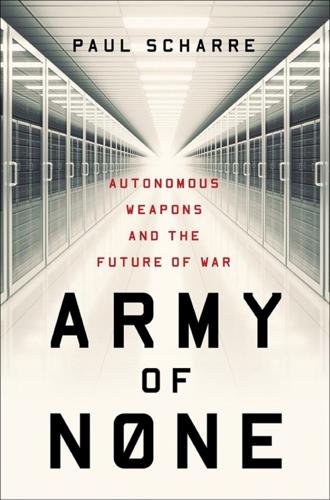
Army of None: Autonomous Weapons and the Future of War
by
Paul Scharre
Published 23 Apr 2018
For an overview of current abilities and limitations in scene interpretation, see JASON, “Perspectives on Research in Artificial Intelligence and Artificial General Intelligence Relevant to DoD,” 10. 232 Brain imaging: “Human Connectome Project | Mapping the Human Brain Connectivity,” accessed June 15, 2017, http://www.humanconnectomeproject.org/. “Meet the World’s Most Advanced Brain Scanner,” Discover Magazine, accessed June 15, 2017, http://discovermagazine.com/2013/june/08-meet-the-worlds-most-advanced-brain-scanner. 232 whole brain emulations: Anders Sandburg and Nick Bostrom, “Whole Brain Emulation: A Roadmap,” Technical Report #2008-3, Oxford, UK, 2008, http://www.fhi.ox.ac.uk/Reports/2008-3.pdf 232 “When people say a technology”: Andrew Herr, email to the author, October 22, 2016. 232 “last invention”: Irving J. Good, “Speculations Concerning the First Ultraintelligent Machine”, May 1964, https://web.archive.org/web/20010527181244/http://www.aeiveos.com/~bradbury/Authors/Computing/Good-IJ/SCtFUM.html.
…
What it would take to build such a machine is a matter of pure speculation, but there is at least one existence proof that general intelligence is possible: us. Even if recent advances in deep neural networks and machine learning come up short, eventually an improved understanding of the human brain should allow for a detailed neuron-by-neuron simulation. Brain imaging is improving quickly and some researchers believe whole brain emulations could be possible with supercomputers as early as the 2040s. Experts disagree wildly on when AGI might be created, with estimates ranging from within the next decade to never. A majority of AI experts predict AGI could be possible by 2040 and likely by the end of the century, but no one really knows.

Heart of the Machine: Our Future in a World of Artificial Emotional Intelligence
by
Richard Yonck
Published 7 Mar 2017
As we’ll explore in the next two chapters, this may be the single best option available to us. 17 FOR BETTER AND FOR WORSE Guangzhou, Guangdong, China—March 30, 2045 The Tianhe-14 supercomputer, nestled deep inside the National Supercomputing Center in Guangzhou, China, has been running the latest version of the People’s Human Brain Emulation for thirty-seven days straight. Throughout that time, processing demands have remained constant. Textbook constant. Power requirements likewise. Oddly, though, the cognition test suites that run continuously against the system’s deep learning algorithms report less than optimal gains across their many analytics modules.
…
See Phenomenal-consciousness Pan paniscus, 14 Pan troglodytes, 14 Paranthropus boisei, 12, 14–15 paraphilia, 187 Parkinson’s disease and DBS systems, 126–127 PARO, 148–149 patent and intellectual property (IP) law, 75 pattern recognition, 53–54 Pearson, Ian, 168–169 peer-to-peer file sharing, 210 People’s Human Brain Emulation, 240 Pepper, 82–83 Perceptio, 75 personal biometrics, 5 personal identity, 206 Personal Robotics Group, MIT, 85, 118–119 personalized education, 117–118 Peter Sager Wallenberg Charitable Trust, 66 Phenomenal-consciousness, 243–249, 258, 270 Physiio, 70, 74 physio-emotional self-knowledge, 34 Picard, Rosalind, 42–48, 51, 53, 57, 60–62, 77 Pinker, Steven, 13, 267 Pinocchio, 233–234 Plato, 29–30 Pleo, 89–90 Plutarch, 206 The Polar Express (Allsburg/Zemeckis), 95–96 The Positronic Man (Asimov and Silverberg), 232 Post-traumatic stress disorder (PTSD), 221–222 Michael’s nightmares, 122–123 and the military, 123–125 prosthetics, 103–104 Psychological Operations (PSYOP), 134 Psychology Today, 141 PSYOP.

Human Compatible: Artificial Intelligence and the Problem of Control
by
Stuart Russell
Published 7 Oct 2019
For an optimistic view arguing that AI safety problems will necessarily be resolved in our favor: Steven Pinker, “Tech prophecy.” 34. On the unsuspected alignment between “skeptics” and “believers” in AI risk: Alexander, “AI researchers on AI risk.” CHAPTER 7 1. For a guide to detailed brain modeling, now slightly outdated, see Anders Sandberg and Nick Bostrom, “Whole brain emulation: A roadmap,” technical report 2008-3, Future of Humanity Institute, Oxford University, 2008. 2. For an introduction to genetic programming from a leading exponent, see John Koza, Genetic Programming: On the Programming of Computers by Means of Natural Selection (MIT Press, 1992). 3. The parallel to Asimov’s Three Laws of Robotics is entirely coincidental. 4.
…
See work, elimination of Tegmark, Max, 4, 114, 138 Tellex, Stephanie, 73 Tencent, 250 tensor processing units (TPUs), 35 Terminator (film), 112, 113 Tesauro, Gerry, 55 Thaler, Richard, 244 Theory of the Leisure Class, The (Veblen), 230 Thinking, Fast and Slow (Kahneman), 238 thinking, learning from, 293–95 Thornton, Richard, 133 Times, 7, 8 tool (narrow) artificial intelligence, 46, 47, 136 TPUs (tensor processing units), 35 tragedy of the commons, 31 Transcendence (film), 3–4, 141–42 transitivity of preferences, 23–24 Treatise of Human Nature, A (Hume), 167 tribalism, 150, 159–60 truck drivers, 119 TrueSkill system, 279 Tucker, Albert, 30 Turing, Alan, 32, 33, 37–38, 40–41, 124–25, 134–35, 140–41, 144, 149, 153, 160–61 Turing test, 40–41 tutoring, 100–101 tutoring systems, 70 2001: A Space Odyssey (film), 141 Uber, 57, 182 UBI (universal basic income), 121 uncertainty AI uncertainty as to human preferences, principle of, 53, 175–76 human uncertainty as to own preferences, 235–37 probability theory and, 273–84 United Nations (UN), 250 universal basic income (UBI), 121 Universal Declaration of Human Rights (1948), 107 universality, 32–33 universal Turing machine, 33, 40–41 unpredictability, 29 utilitarian AI, 217–27 Utilitarianism ((Mill), 217–18 utilitarianism/utilitarian AI, 214 challenges to, 221–27 consequentialist AI, 217–19 ideal utilitarianism, 219 interpersonal comparison of utilities, debate over, 222–24 multiple people, maximizing sum of utilities of, 219–26 preference utilitarianism, 220 social aggregation theorem and, 220 Somalia problem and, 226–27 utility comparison across populations of different sizes, debate over, 224–25 utility function, 53–54 utility monster, 223–24 utility theory, 22–26 axiomatic basis for, 23–24 objections to, 24–26 value alignment, 137–38 Vardi, Moshe, 202–3 Veblen, Thorstein, 230 video games, 45 virtual reality authoring, 101 virtue ethics, 217 visual object recognition, 6 von Neumann, John, 23 W3C Credible Web group, 109 WALL-E (film), 255 Watson, 80 wave function, 35–36 “we’re the experts” argument, 152–54 white-collar jobs, 119 Whitehead, Alfred North, 88 whole-brain emulation, 171 Wiener, Norbert, 10, 136–38, 153, 203 Wilczek, Frank, 4 Wiles, Andrew, 185 wireheading, 205–8 work, elimination of, 113–24 caring professions and, 122 compensation effects and, 114–17 historical warnings about, 113–14 income distribution and, 123 occupations at risk with adoption of AI technology, 118–20 reworking education and research institutions to focus on human world, 123–24 striving and enjoying, relation between, 121–22 universal basic income (UBI) proposals and, 121 wage stagnation and productivity increases, since 1973, 117 “work in human–machine teams” argument, 163 World Economic Forum, 250 World Wide Web, 64 Worshipful Company of Scriveners, 109 Zuckerberg, Mark, 157 ABCDEFGHIJKLMNOPQRSTUVWXYZ About the Author Stuart Russell is a professor of Computer Science and holder of the Smith-Zadeh Chair in Engineering at the University of California, Berkeley.

More Everything Forever: AI Overlords, Space Empires, and Silicon Valley's Crusade to Control the Fate of Humanity
by
Adam Becker
Published 14 Jun 2025
Given the other possible barriers in the way (the end of Moore’s law, the nonlinear relationship between intelligence and computing power, the possible unsuitability of computers as machines to simulate the human brain, and so on), the case for a mere ability explosion in a few narrow domains still looks rather weak. 87 Kurzweil, Singularity Is Near, 143. 88 Ibid., 125, 126–127. 89 Ibid., 70. 90 Ibid., 144. 91 Ibid., 158, 197. 92 Kurzweil, “Featured Session.” 93 Kurzweil, Singularity Is Near, 124–125. 94 Daisy Yuhas and Ferris Jabr, “Know Your Neurons: What Is the Ratio of Glia to Neurons in the Brain?,” Scientific American, June 13, 2012, www.scientificamerican.com/blog/brainwaves/know-your-neurons-what-is-the-ratio-of-glia-to-neurons-in-the-brain/. 95 Anders Sandberg and Nick Bostrom, Whole Brain Emulation: A Roadmap, Technical Report no. 2008-3 (Oxford: Future of Humanity Institute, 2008), 80–81, www.fhi.ox.ac.uk/brain-emulation-roadmap-report.pdf. The same study suggests that Kurzweil’s estimate of the human brain’s memory capacity is far too low. 96 Hendricks, interview with author. 97 Rodney Brooks, “I, Rodney Brooks, Am a Robot,” IEEE Spectrum, June 1, 2008, https://spectrum.ieee.org/i-rodney-brooks-am-a-robot. 98 Matthew Cobb, The Idea of the Brain: The Past and Future of Neuroscience (New York: Basic Books, 2020), 377–379. 99 Ibid., 4–5. 100 Ibid., 379–380. 101 Ibid., 381. 102 Ibid., 375–376. 103 Such arguments are based on the Church-Turing thesis, though going from the original thesis to the particular claim being made about AGI isn’t always straightforward.

Artificial You: AI and the Future of Your Mind
by
Susan Schneider
Published 1 Oct 2019
Converging Technologies for Improved Human Performance: Nanotechnology, Biotechnology, Information Technology and Cognitive Science. Arlington, VA: National Science Foundation and Department of Commerce. Sacks, O. 1985. The Man Who Mistook His Wife for a Hat and Other Clinical Tales. New York: Summit Books. Sandberg, A., and N. Bostrom. 2008. “Whole Brain Emulation: A Roadmap.” Technical Report 2008–3. Oxford: Future of Humanity Institute, Oxford University. Sawyer, R. 2005. Mindscan. New York: Tor. Schipp, Debbie. 2016. “Boyfriend’s Delivery of Love for the Woman Whose Brain Is Frozen,” news.com.au, June 19, https://www.news.com.au/entertainment/tv/current-affairs/boyfriends-delivery-of-love-for-the-woman-whose-brain-is-frozen/news-story/8a4a5b705964d242bdfa5f55fa2df41a.
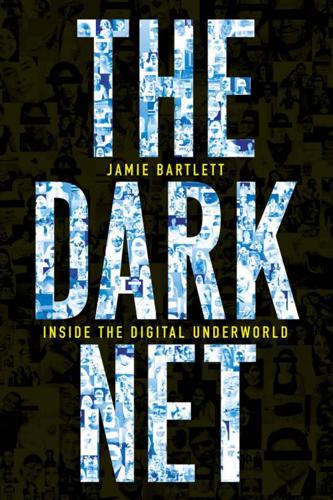
The Dark Net
by
Jamie Bartlett
Published 20 Aug 2014
He recently experimented with the cognitive enhancing drug modafinil, an experience that he claims was positive, and tells me he also plans to have magnets surgically inserted into his fingers so he can feel electromagnetic waves. But his main area of interest is mind uploading (what he calls ‘whole brain emulation’). In 2008, Anders published a 130-page instruction manual setting out exactly how the brain’s content, its precise structure, pathways and electric signals, could be transferred on to a computer chip. If it was perfectly copied, it would, thinks Anders, be indistinguishable from the real thing.

The Rationalist's Guide to the Galaxy: Superintelligent AI and the Geeks Who Are Trying to Save Humanity's Future
by
Tom Chivers
Published 12 Jun 2019
.: ‘Although they can perform a number of tasks of which no individual human is capable, they are not intellects and there are many fields in which they perform much worse than a human brain – for example, you can’t have real-time conversation with “the scientific community”.’) Also, I’ll just specify that in this discussion of AI, I won’t be talking about ‘whole-brain emulations’, a route to machine intelligence that involves scanning a human brain at some low level – cell by cell, probably – and uploading it into a computer. That process is important, and a key figure in the Rationalist community, Robin Hanson, has written a thoroughly interesting and mildly terrifying book called The Age of Em about what a future in which we can upload ourselves might look like.

Atrocity Archives
by
Stross, Charles
Published 13 Jan 2004
Rather than do this openly and risk frightening the sheeple by stationing a death ray on every street corner, our lords and masters decided they'd do it bottom-up, by legislating that all public cameras be networked, and having back doors installed in them to allow the hunter-killer basilisk brain emulators to be uploaded when the time comes. Which, let's face it, makes excellent fiscal strength in this age of outsourcing, public-private partnerships, service charters, and the like. I mean, you can't get business insurance if you don't install antitheft cameras, someone's got to watch them so you might as well outsource the service to a security company with a network operations centre, and the brain-dead music industry copyright nazis are campaigning for a law to make it mandatory to install secret government spookware in every Walkman--or camera--to prevent home taping from killing Michael Jackson.

Advances in Artificial General Intelligence: Concepts, Architectures and Algorithms: Proceedings of the Agi Workshop 2006
by
Ben Goertzel
and
Pei Wang
Published 1 Jan 2007
[Cassio Pennachin ]: I’m not sure of anything, I’m just saying that lots of people seem to be assuming that its going to take over the world, that it’s a weapon, and I’m challenging that assumption. I’m not going to assume that evolutionary bias is carried over into AI’s, even if the AI is achieved through brain emulation. [Bill Redeen]: I do think we have to assume this is inevitable… the evolution and emergence of AGI. [Josh S. Hall]: I think it’s worth thinking about what happens if a group the size of Novamente can create an AGI and it works. Or, what if Hugo de Garis creates an AGI that works. Or, what if Sam S.

The Singularity Is Near: When Humans Transcend Biology
by
Ray Kurzweil
Published 14 Jul 2005
Blue Gene/L will also have around one hundred terabytes (about 1015 bits) of main storage, more than our memory estimate for functional emulation of the human brain (see below). In line with my earlier predictions, supercomputers will achieve my more conservative estimate of 1016 cps for functional human-brain emulation by early in the next decade (see the "Supercomputer Power" figure on p. 71). Accelerating the Availability of Human-Level Personal Computing. Personal computers today provide more than 109 cps. According to the projections in the "Exponential Growth of Computing" chart (p. 70), we will achieve 1016cps by 2025.